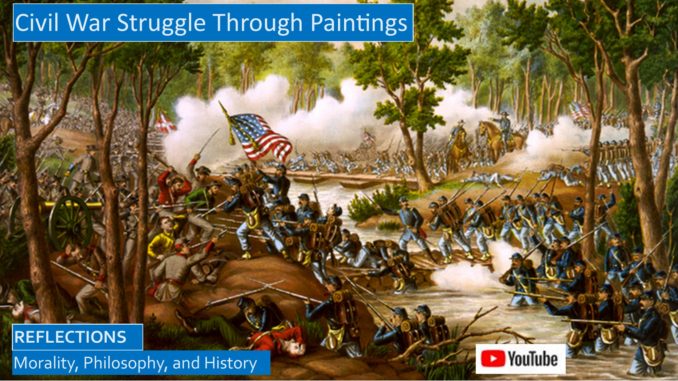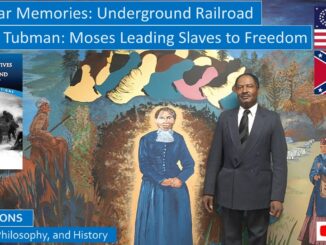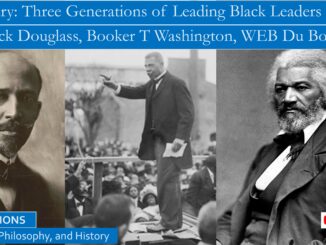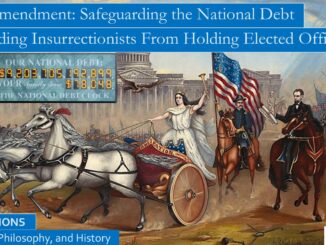
Originally, I planned to only focus on the human aspects of the Civil War, how the war morphed form a war to preserve the Union to a war fought to emancipate the black man from slavery. But then I was astounded, as I was looking for paintings to display in my videos, simply astounded by how numerous and epic the paintings of the battles of the Civil War are, and also paintings that expressed the pathos and yearnings of those who suffered through those long years of war fought on American soil.
The Civil War was perhaps the last great conflict celebrated by painters, because this struggle was the first great war memorialized by the photographers, including Mathew Brady and many others. Maybe American painters perhaps realized that this was the last time for them to record a visual history of a major war.
YouTube video for this blog, with paintings: https://youtu.be/2hoBOSOBUP8
Immediately after President Lincoln was elected in November 1860, South Carolina was the first state to secede from the Union the next month, the state demanded that the federal government abandon Fort Sumter in Charleston Harbor and refused to allow the federal government to resupply the fort.
Lincoln was inaugurated in March 1861, South Carolina bombarded Fort Sumter in April 1861, and although the Union forces returned fire, they were forced to evacuate the fort. The final painting shows the desolation wrought by the bombardment of Fort Sumter. Now that the South has fired the opening salvo of the Civil War, Lincoln calls up 75,000 volunteers to quell the rebellion, and four more states secede from the Union.
General Winfield Scott, brilliant strategic general and hero of the Mexican War, served under seven Presidents, but in the 1860’s he was in his seventies, and was so obese that he had to be hoisted on and off his horse with a crane. But he was still a sharp general, and his “Anaconda Plan” was the strategy that would win the war, and this Great Snake picture was printed in the newspapers across the country. 1861. This plan called for a naval blockade that strangled the commerce of the Confederacy, the Union forces seizing control of the Mississippi River, then Union forces marching through the heart of the Confederacy. General Scott predicted that 300,000 soldiers would be needed to defeat the Confederacy, which was less than half the size of the eventual Union Army, but it was shocking numbers at the beginning of the war, when the Union Army had fewer than twenty thousand soldiers.
After Virginia seceded, the Confederacy quickly moved its capitol to Richmond, VA, which was about a hundred miles from Washington, DC. The Confederates compared their rebellion to the American Revolution, and to be honest, the Americans in the Revolution may have faced longer odds than the Confederacy in the Civil War, except that their enemy’s Capitol was in London, on the other side of the Atlantic Ocean. To win the war, the Union Army would be compelled to invade the Confederacy.
Popular Northern political opinion was that if the Union Army simply captured Richmond, the Confederate Capitol, the war would be quickly over, which militarily was just not true. After all, in the Revolutionary War the British captured Philadelphia and New York City, but still lost the war. Lincoln faced tremendous political pressure to invade the South immediately, but the generals advised against quick military action, they wanted to wait until the conscripted troops had been trained and drilled. Lincoln pointed out that the Confederate troops were just as green, and in July 1861 the first battle of the Civil War was fought, the First Battle of Bull Run, known to Confederacy as the Battle of First Manassas.
To listen to this history, and view the paintings that so beautifully illustrate the war, please access our YouTube Video:
Or, you can view the paintings in the PowerPoint script uploaded to our SlideShare account:




Be the first to comment